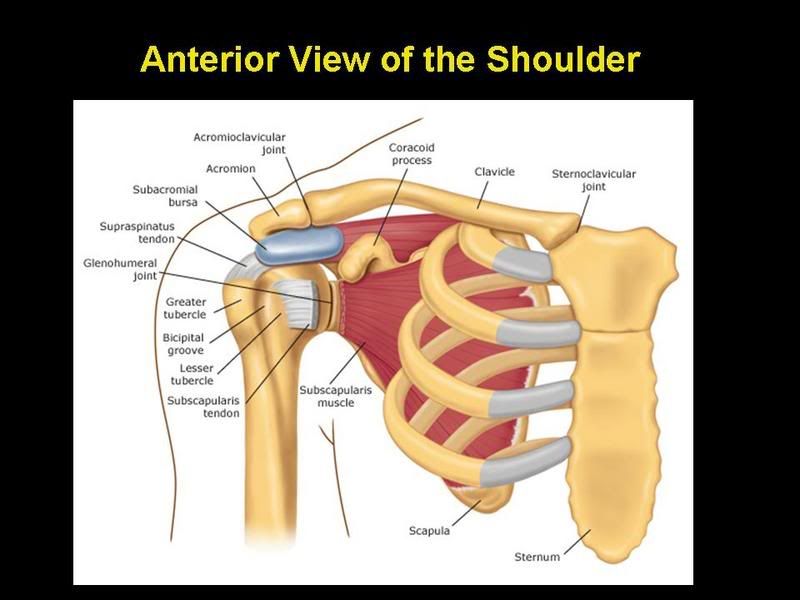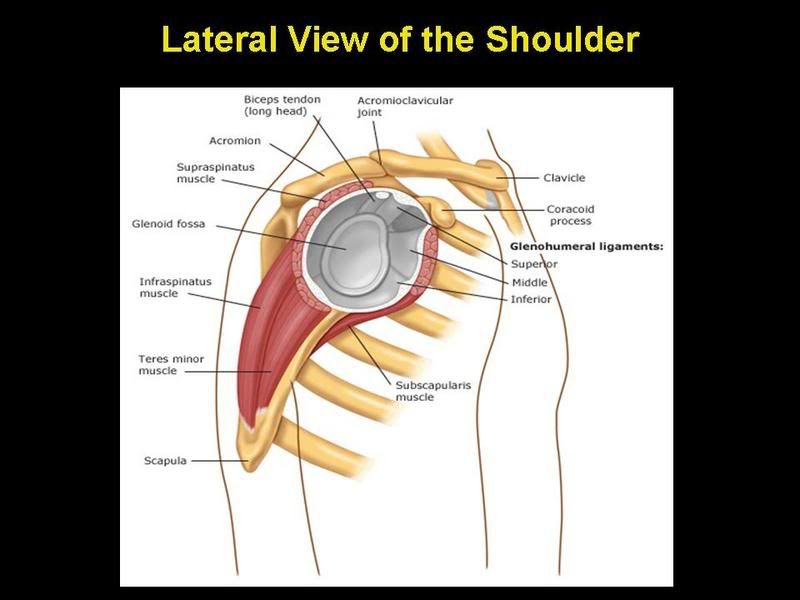Dr. Houser's Shoulder Rehabilitation
* Author's Note: This is a repost of thread from 2007... - the information contained herein is NOT meant to replace the quality advice an EXAMINING physician could offer. It does NOT necessarily represent the views of Anabolic Minds yet will be a follow-through of my own road back. You will likely find a LOT of information to aid in adequate patient/physician rapport and with that I wish the best with one of the most frequent injuries, by far, seen in the gym.
Introduction/History
In early 2006, my max flat bench press was 450 x 3 reps (shared it with the guys over on the DA forum when it happened).
In April 2006, however, with 315 on the bar, I caught the left peg coming down and my "spotter" exclaimed "Wow, that was just like slow motion man" as the 315 pounds comes down on my right shoulder. Uhhh mental note: NEVER incorporate a guy to help that is less than 2/3 of the weight you are attempting to lift. So, I offered what I thought be reasonable retort at the time "Yeah cool deal numb nuts...don't let it happen again." Threw up another set and felt fine...
Stepped up to the incline - a simple 135 pounder to start, took it down to my chest and OH SH*T...low and behold, I asked my "new spotter" to pick up the weight.
Physical Limitations
As I have mentioned in other forums, I never could appreciate this fully, even with having clients with similar experience over the course of the last 6+ years...well, of course until last year.
The lifts impeded by my injury that piss me off the most:
1. Bench (flat and incline - often I can get the decline based on angle with less pain, perhaps this is something you can try if yours was a true anterior delt injury)
2. Weighted Dips (I fight through the pain most of all on these and have lifted up to 3 plates on this, but really am upset in the aftermath )
3. Pull Ups (this is the least of concern - happens like every 4th workout or so, where it will be agonizing so much that I need to get an answer Mon of a more definitive light because they are becoming more frequent here then they used to).
Imaging
MRI at the time showed inflammation to the anterior delt (perhaps a tad bursitis), nothing else but could have been the start of a minor compression syndrome setting in the supraspinatis tendon, but the imaging was unclear in this regard, or perhaps too soon.
Sweet - here I was almost a year later with growing pain. Of course, the doctor at the time offered me the choice of cortisone shot, and thinking ahead to the potential of what a cortisone shot could offer, I opted out. He also offered me the option to lay off the training, which I said in the current state of rehabilitation research, rehab goes the route of low-carb diets - "MEAT is superior to RICE" these days, namely with the potential for impingement syndromes. He had absolutely no idea what the hell I meant, but alas I digress...
Well, you know what they say - "Doctors make the WORST patients!"
Oh, and by the way
MEAT: "Movement / Exercise / Analgesia / Treatments"
RICE: "Rest / Ice / Compression / Elevation"
Follow-Up Imaging
2/12/07: MRI - Significant Tendonitis of the Supraspinatus tendon and Bursitis of the subacromial region, cannot rule out a possible Stage I impingement syndrome.
My offerings were virtually the same as before w/ inclusion of PT. Again, I have opted out...but plan to share with you below what happens in my own self-constructed rehab program. Stay tuned...
D_
* Author's Note: This is a repost of thread from 2007... - the information contained herein is NOT meant to replace the quality advice an EXAMINING physician could offer. It does NOT necessarily represent the views of Anabolic Minds yet will be a follow-through of my own road back. You will likely find a LOT of information to aid in adequate patient/physician rapport and with that I wish the best with one of the most frequent injuries, by far, seen in the gym.
Introduction/History
In early 2006, my max flat bench press was 450 x 3 reps (shared it with the guys over on the DA forum when it happened).
In April 2006, however, with 315 on the bar, I caught the left peg coming down and my "spotter" exclaimed "Wow, that was just like slow motion man" as the 315 pounds comes down on my right shoulder. Uhhh mental note: NEVER incorporate a guy to help that is less than 2/3 of the weight you are attempting to lift. So, I offered what I thought be reasonable retort at the time "Yeah cool deal numb nuts...don't let it happen again." Threw up another set and felt fine...
Stepped up to the incline - a simple 135 pounder to start, took it down to my chest and OH SH*T...low and behold, I asked my "new spotter" to pick up the weight.
Physical Limitations
As I have mentioned in other forums, I never could appreciate this fully, even with having clients with similar experience over the course of the last 6+ years...well, of course until last year.
The lifts impeded by my injury that piss me off the most:
1. Bench (flat and incline - often I can get the decline based on angle with less pain, perhaps this is something you can try if yours was a true anterior delt injury)
2. Weighted Dips (I fight through the pain most of all on these and have lifted up to 3 plates on this, but really am upset in the aftermath )
3. Pull Ups (this is the least of concern - happens like every 4th workout or so, where it will be agonizing so much that I need to get an answer Mon of a more definitive light because they are becoming more frequent here then they used to).
Imaging
MRI at the time showed inflammation to the anterior delt (perhaps a tad bursitis), nothing else but could have been the start of a minor compression syndrome setting in the supraspinatis tendon, but the imaging was unclear in this regard, or perhaps too soon.
Sweet - here I was almost a year later with growing pain. Of course, the doctor at the time offered me the choice of cortisone shot, and thinking ahead to the potential of what a cortisone shot could offer, I opted out. He also offered me the option to lay off the training, which I said in the current state of rehabilitation research, rehab goes the route of low-carb diets - "MEAT is superior to RICE" these days, namely with the potential for impingement syndromes. He had absolutely no idea what the hell I meant, but alas I digress...
Well, you know what they say - "Doctors make the WORST patients!"
Oh, and by the way
MEAT: "Movement / Exercise / Analgesia / Treatments"
RICE: "Rest / Ice / Compression / Elevation"
Follow-Up Imaging
2/12/07: MRI - Significant Tendonitis of the Supraspinatus tendon and Bursitis of the subacromial region, cannot rule out a possible Stage I impingement syndrome.
My offerings were virtually the same as before w/ inclusion of PT. Again, I have opted out...but plan to share with you below what happens in my own self-constructed rehab program. Stay tuned...
D_



